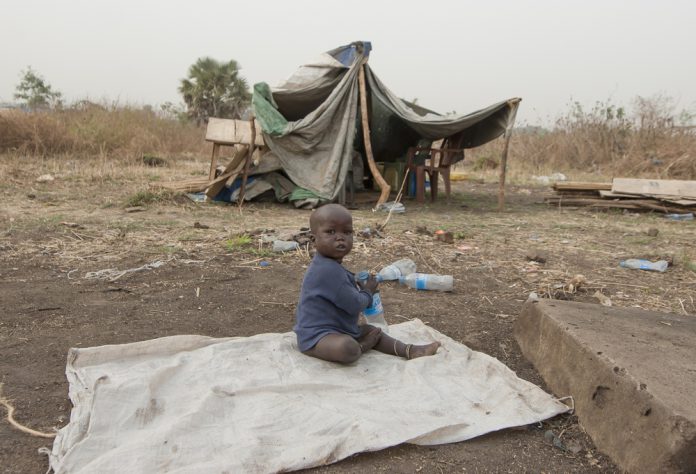Famine has been declared in South Sudan by the UN and South Sudanese government, where it is estimated up to 100,000 people are facing starvation.
According to the World Food Programme (WFP), a further one million are on the brink of starvation.
A famine is declared when certain measures of mortality, malnutrition and hunger are met. These include:
- At least 20% of households in an area face extreme food shortages with a limited ability to cope
- Acute malnutrition rates exceed 30%
- The death rate exceeds two persons per day per 10,000 persons
Joyce Luma, the South Sudan country director for the UN’s World Food Programme, has blamed the country’s wars and collapsing economy.
“This famine is man-made,” she said. “WFP and the entire humanitarian community have been trying with all our might to avoid this catastrophe . . . But there is only so much that humanitarian assistance can achieve in the absence of meaningful peace and security.”
More than 40 percent of South Sudan’s population are in need of urgent food, agriculture and nutrition assistance.
Serge Tissot, FAO representative in South Sudan, said: “Famine has become a tragic reality in parts of South Sudan and our worst fears have been realised. Many families have exhausted every means they have to survive.
“The people are predominantly farmers and war has disrupted agriculture. They’ve lost their livestock, even their farming tools. For months there has been a total reliance on whatever plants they can find and fish they can catch.”
If food aid does not reach children urgently “many of them will die,” said the head of the UN children’s agency in South Sudan, Jeremy Hopkins. Over 250,000 children are severely malnourished he added.
The famine is the first to be declared the 2011 famine in Somalia, where more than a quarter of a million people are estimated to have died between October 2010 and April 2012.
Unicef has announced plans to treat 207,000 children for severe malnutrition this year.

